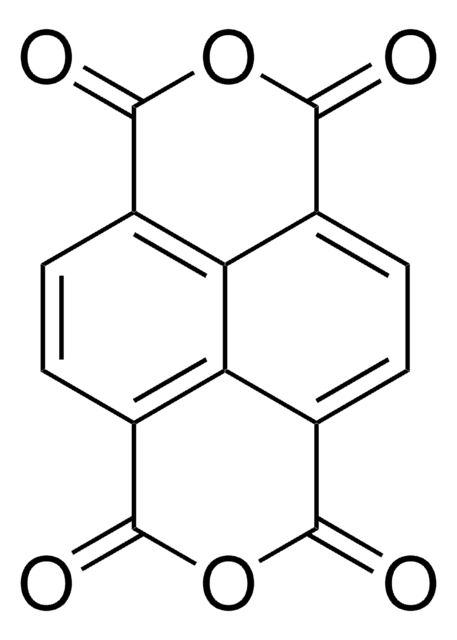649813
PEDOT
tetramethacrylate end-capped solution, 0.5 wt. % (dispersion in propylene carbonate), contains p-toluenesulfonate as dopant
Synonyme(s) :
Oligotron™ PC, PEDOT, PEDOT, tetramethacrylate end-capped
About This Item
Produits recommandés
product name
Poly(3,4-ethylenedioxythiophene), tetramethacrylate end-capped solution, 0.5 wt. % (dispersion in propylene carbonate), contains p-toluenesulfonate as dopant
Poids mol.
~1,360-1,600 g/mol (methacrylate equivalent weight)
average Mn ~6,000(lit.)
Contient
p-toluenesulfonate as dopant
Composition
Oligotron™ tetramethacrylate, 0.5 wt. %
propylene carbonate, 99.5 wt. %
Concentration
0.5 wt. % (dispersion in propylene carbonate)
Résistance
1-10 M Ω/sq (typical surface resistance of film)
Conductivité
0.1-0.5 S/cm (bulk)
Densité
1.189 g/mL at 25 °C
Vous recherchez des produits similaires ? Visite Guide de comparaison des produits
Description générale
Application
Caractéristiques et avantages
Attention
Informations légales
Mention d'avertissement
Warning
Mentions de danger
Conseils de prudence
Classification des risques
Eye Irrit. 2
Code de la classe de stockage
10 - Combustible liquids
Classe de danger pour l'eau (WGK)
WGK 2
Point d'éclair (°F)
269.6 °F - closed cup
Point d'éclair (°C)
132 °C - closed cup
Certificats d'analyse (COA)
Recherchez un Certificats d'analyse (COA) en saisissant le numéro de lot du produit. Les numéros de lot figurent sur l'étiquette du produit après les mots "Lot" ou "Batch".
Déjà en possession de ce produit ?
Retrouvez la documentation relative aux produits que vous avez récemment achetés dans la Bibliothèque de documents.
Les clients ont également consulté
Articles
Conjugated polymers offer charge transport between inorganic, electrically conducting metals and organic, proton-conducting biological systems.
Progress in Organic Thermoelectric Materials & Devices including high ZT values of >0.2 at room temperature by p-type (PEDOT:PSS) & n-type (Poly[Kx(Ni-ett)]) materials are discussed.
The application of conducting polymers at the interface with biology is an exciting new trend in organic electronics research.
Notre équipe de scientifiques dispose d'une expérience dans tous les secteurs de la recherche, notamment en sciences de la vie, science des matériaux, synthèse chimique, chromatographie, analyse et dans de nombreux autres domaines..
Contacter notre Service technique








